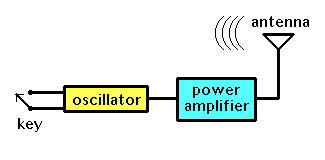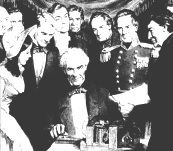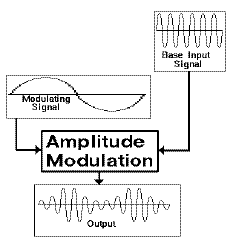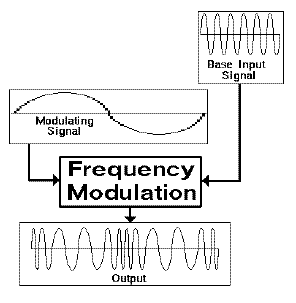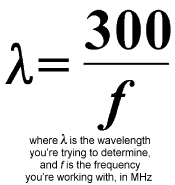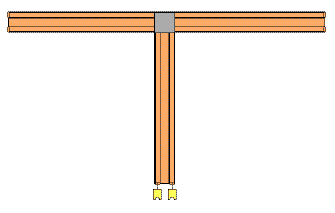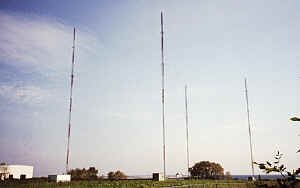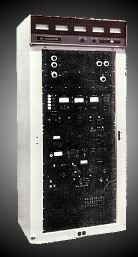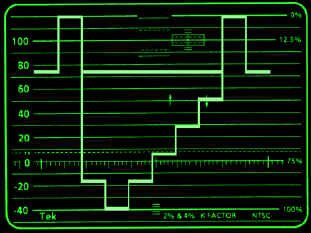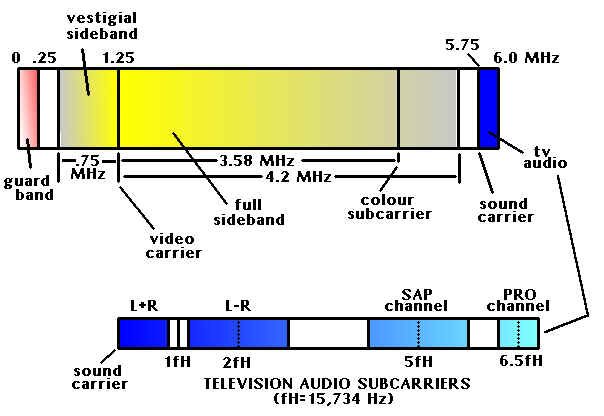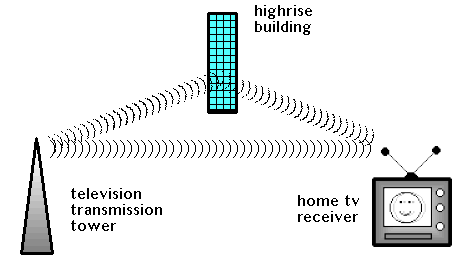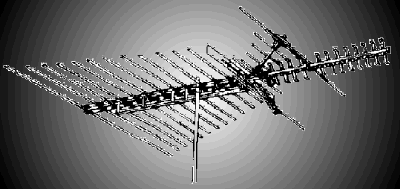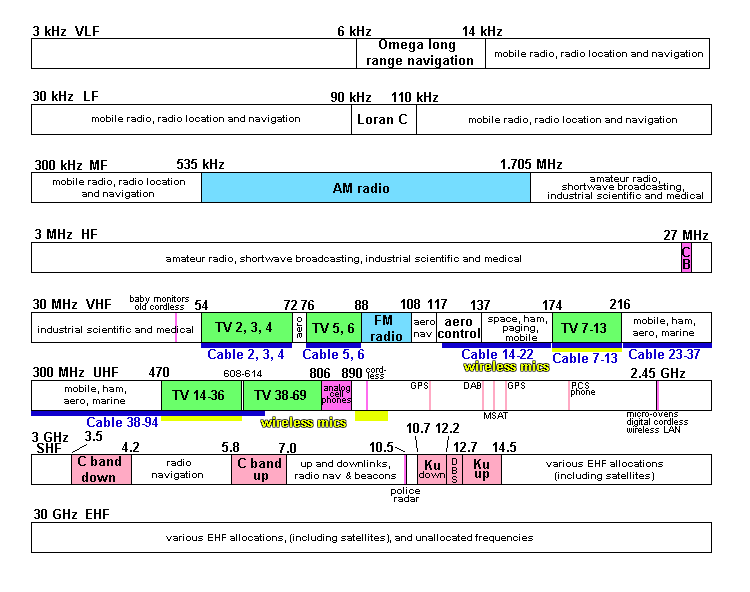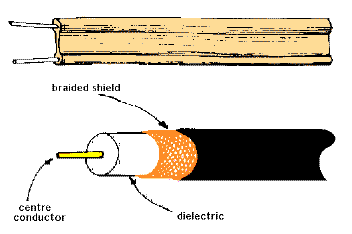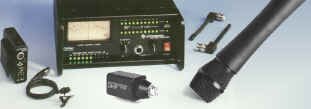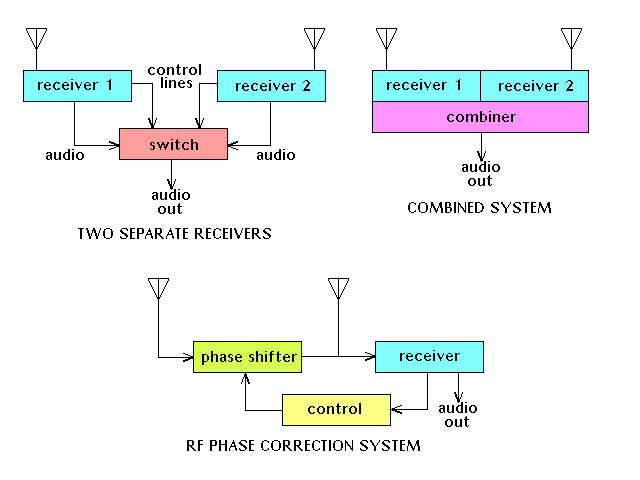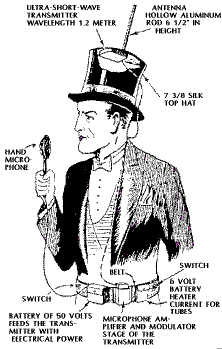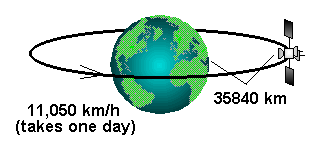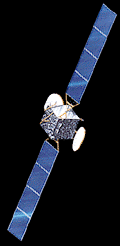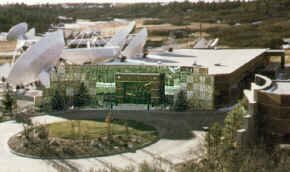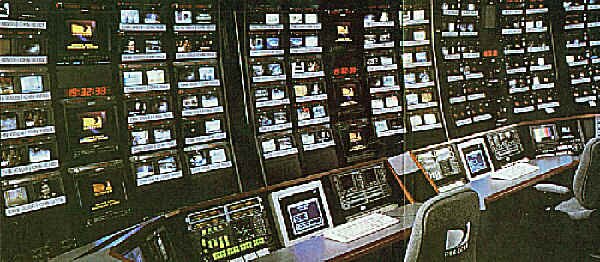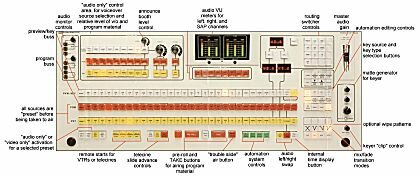|
As long as the cable company has a cable from them to you, there are a lot of other signals they can send. Some come from satellites especially for cable viewers; some are produced by the cable company in their own studios. TV sets used to be built to tune in VHF and UHF channels - while all sets are "cable ready" now, they can still be set to receive the over the air spectrum. But, the regular UHF channels from 14 to 69 can't be sent down cable TV unmodified, because their high frequency energy is absorbed by the cable itself. So, that leaves us with 12 channels (the VHF dial) to accommodate 50 or so signals.
If you look at the government assignments for who can broadcast on what frequency, there's a gap between 6 and 7. There's also a huge gap between 13 and 14. The signals that the cable company sends are the same type as the ones that are broadcast, only they're confined to the cable. This means they can use the same frequencies that are occupied by aircraft, police, and taxis, and they won't interfere with those other services.
To pick up the signals resulting from this technology you'll need either a cable converter or a cable-ready television set. And, with all that converting of frequencies going on, the cable company gives you a chart.
Here's what's happening. The numbers 2 to 13 on your converter are real channels 2 through 13. The cable company probably has converted some UHF channels in your area to these, and chances are that the others are on the wrong channels, but they really occupy channels 2 through 13. Channels 14 and up aren't what they seem - 14 to 22 are the hidden 9 channels between the real 6 and 7, and 23 to 64 are a bunch from between real 13 and 14.
For those of you with 100 channel cable-ready televisions, you also have channels 65 through 94, located in, yes, UHF areas 14 through 43. But wait a minute, we said that UHF channels can't be transmitted down the cable. Well, they can, but they become increasingly noisy as you go up the band. This is why, up until lately, cable companies weren't using these frequencies. Channels 95 through 99 are located to cover completely, and go just above, the FM radio band. That's why there's nothing on those channels, either.
Try This At Home!
Tune your cable ready TV set to some upper channels. Notice how they get noisy, the higher you go. Now, tune way up there - into the 80s and 90s. See any other channels the cable company is using that you don�t know about? Sometimes, on Rogers, you see a graphic display called a "spectrum analyzer" that looks at the relative levels of all the channels in the system!
Don't Touch That Dial: Digital Cable, Telcos, MMDS, LMCS, DBS
Over-the-air terrestrial transmission and standard analog cable TV no longer have a monopoly on the way to get television signals into your home. There are several other systems. Keep a watch for:
Digital Cable TV
Brought to you by your local cable company, it�s a digital multi-channel version of what we know in the analog world, using the same cable, but getting around that coaxial cable frequency absorption problem by encoding the television channels digitally. It requires a set-top box to decode the digital signals back into analog NTSC for you to enjoy.
Video By Telephone
Your local telephone company, for years, was working overtime to perfect a system that will bring video to your place via phone lines (plain old telephone service, or POTS), or a modification thereof. Not much news lately, but you never know. Stay tuned.
Multichannel Multipoint Distribution Systems (MMDS)
On August 6, 1997, Teleglobe Inc. won a license to begin a service called Look TV in the Toronto area. It�s based on a system called MMDS. It works in the 2.5 to 2.686 GHz range and can do a line of sight transmission of 40 to 50 kilometres. The main antenna is on the CN Tower, but there are some booster/repeater towers around town, so if you can see any of them, you can subscribe to MMDS distribution. The repeaters increase the coverage by receiving the main signal and retransmitting it further afield. MMDS uses a 30 cm square flat antenna, and no cables. The MMDS system is comparably priced to regular cable TV subscription rates, after an installation fee. Look TV now has services in Southern Ontario, Ottawa, Montreal, Trois-Rivieres, and Quebec City. In Manitoba, a similar system called SkyCable already exists and works on the same principles.
Direct Broadcast Satellite (DBS)
Various pizza-sized dish "direct to home" satellite reception alternatives, that have got off to a slow start in Canada (but are picking up steam quickly) and have done well in the United States. More on these later in this chapter.
Wireless Mics, IFBs, Headsets and Interference
|



